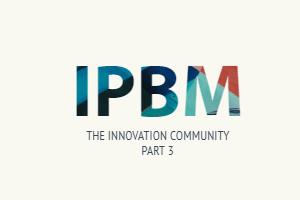
The Innovation Community: Capture, Nurture, Manage
One key driver in the shift toward IPBM (Intellectual Property Business Management) involves addressing the challenge of failing to protect the valuable ideas borne from the work of innovation. The management of innovation, and nurturing the participation of inventors and IP asset developers, is paramount in this movement. Increasingly, the leading IPM vendors have sought to harness this nexus and develop new tools to better engage and empower all stakeholders in the innovation lifecycle. Our comprehensive market survey found that many advanced solution vendors are either introducing new tools to drive invention disclosure, IDS and prior-art searching processes, or have significantly improved upon and matured existing capabilities.
This is in part a result of an evolving understanding of user personas. In the IPBM model, attorneys, inventors and the business play important roles in the innovation lifecycle. Despite a historical focus on docketers and paralegals – the “data entry” stakeholders – vendors are beginning to understand and capitalize on the needs of the lifecycle’s upstream and downstream stakeholders in a deliberate, considered and strategic approach to integrate every phase of the asset development and management process with the business, technical, and risk management objectives of the organization. IPBM is about “innovation in context” and the tools designed to embrace it invite users into a harmonized information management process for better outcomes and business-aligned realization.
The intrinsic value of refined innovation management comes from the deliberate involvement of these multidisciplinary stakeholders, whether in the form of R&D specialists, scientists, engineers, business managers, marketing and business development, and C-suite executives. It’s important to note that innovation management is necessarily broad in definition and approach; its inclusive of protectable assets as well as the vital trade secrets and institutional know-how that buttress a company or firm’s ability to compete in its market. However, there is also tremendous business value in capturing not only the conversation, but the data and analytics that perpetrate. This expanded approach serves to arm decision-makers with the ability to contemplate the potential business impact of innovation and investment.Another element driving innovation management in an IPBM paradigm is the continued emphasis on improving the tools that connect and integrate stakeholders in the process; this includes departmental stakeholders, cross-functional teams, management and reporting lines, and external collaborators, including law firms and outside providers. Collaboration tools and portals – hardly a new idea – have long failed to deliver any real collaboration, settling most often for a “least common denominator” approach that served to provide little more “collaboration” than an online document repository (typically manually maintained and woefully out-of-date). Unfortunately, “collaboration” has arguably joined the lexicon of meaningless “consultant-speak” along the likes of “knowledge management” and “legal project management.”
However, IPBM purports to address the root cause of legacy collaboration failures with a focus on 1) incorporating cross-disciplinary lifecycle participation, and 2) integration and alignment of workflow. It is not a “collaboration portal;” rather, it is a paradigm designed from the ground up to involve stakeholders when and as they’re needed in the process (both as active participants and passive monitors), with audience-specific information presentation, and as a lifecycle management apparatus, to maintain, support and relevantly surface the contexts of time, work product, impact, and decision. IPBM is a pragmatic, approachable decision-support system.


